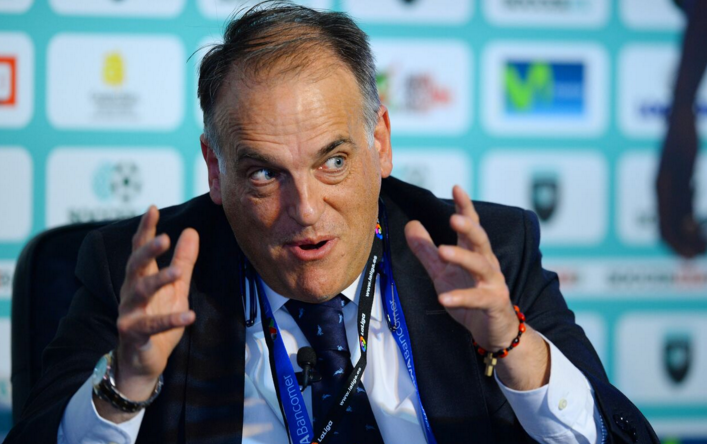By Paul Nicholson in Mexico City
May 12 – It was a joke but when MLS Commissioner Don Garber responded to the Premier League’s David Dein on World Cup hosting saying that “if you could host it next week, we could host it tomorrow”, it showed where the real power balance in football lies.
Garber and Dein were on a Soccerex panel in Mexico City with La Liga’s Javier Tebas (pictured) and LigaMX’s Enrique Bonilla – the later two come from countries that could also host the World Cup next week, though Bonilla was wistfully quiet on this one as his country prepares a bid for 2026 which will almost certainly pitch it against the US.
But this wasn’t a panel looking at World Cup hosting but one that was looking at the success factors for the commercial growth of leagues. And the conclusions and paths that the leagues are taking can only be described as similarly different.
At the top of the pile in terms of commercial revenue is by far the Premier League with income that has rocketed from £40 million in 1992/93 to close to £2 billion in 2014/15.
Dein said that the most important element in this success has been getting the product right. “The football has to come first. It has to be competitive and compelling and something that people want to watch.” The next key factors he listed are attractive modern stadia and an outstanding atmosphere.
These comments was the cue for a testosterone loaded response from Tebas who said: “The Premier League is economically number one, but after a few years we will be number one. We are best to develop our players, our coaches are the best and we have made some good economic investments… the Premier League is number one economically and has a Cinderella story (Leicester City) but when we play in Europe we win.”
Tebas is passionate about the strength of La Liga and confident that now it is “bundling” its league sales (previously it’s top clubs Real Madrid and Barcelona sold their rights independently) it will quickly make up the revenue gap to the Premier League.
In contrast the US and Mexican models are different. Garber pointed to the importance of football specific stadia in building a successful league. “The MLS is a 20 year project so far and is growing in a very commercial market. All our clubs are in great facilities,” he said. He also highlighted the size of the US sports market at more than $100 billion as an indicator that the country has an appetite for professional sports.
In terms of growth the MLS will likely continue to add teams on its franchise model – a franchise costs about $100 million – and pursue its expansion not dissimilar to the NBA experience.
Mexico’s Liga MX has placed a similar emphasis on good stadia and many of its clubs have undergone stadium renovations. The major difference with the Mexican league is that it crowns two champions each season, splitting its league play into two halves. Bonilla attributes this to a club requirement to have instant success – fans are demanding and having two chances to win keeps them engaged.
In fact engagement is a key plank of Liga MX’s brand strategy with Bonilla emphasising the success it has had growing its social media. “We also have an extra market,” he said. “In the US our ratings are only below the ratings for the NFL.”
The leagues are all kings of their own markets for the simple reason that they have developed their products – in different ways – that tailor to their market expectancies. In that respect none of the leagues are particularly more successful than the others. It is the battleground of the international markets that will likely see most blood shed as the leagues – particularly La Liga and the Premier League – compete head to head for the big money.
Contact the writer of this story at moc.l1751319051labto1751319051ofdlr1751319051owedi1751319051sni@n1751319051osloh1751319051cin.l1751319051uap1751319051

